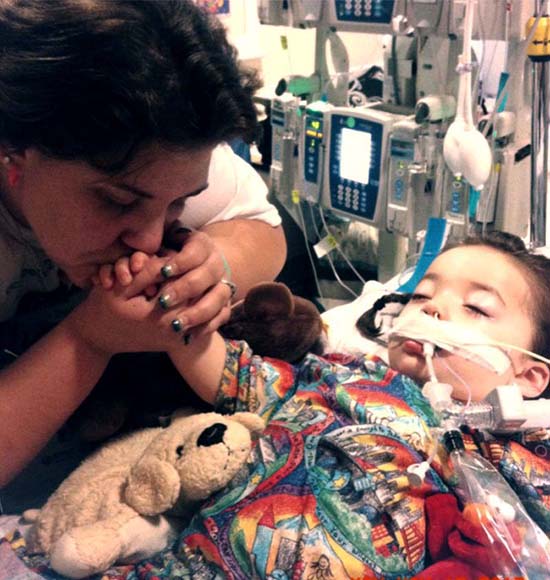这款洗衣神器竟然能杀人,该怎么破?
|
与《财富》杂志的多次交流中,宝洁不断强调各种努力,包括贴标签、做广告、参与人身安全教育会议以及与公司合作的意见领袖博客教育公众安全使用凝珠等等。2017年年底“汰渍凝珠调整”引起轰动时,受伤人数很少,但负面宣传立即出现,宝洁的反应很迅速。汰渍在推特上的官方号劝告青少年不要吃凝珠。宝洁还迅速制作了一条广告,片中英格兰爱国者橄榄球队的边锋罗布·格罗科夫斯基说:“用汰渍凝珠洗衣服,不要吃下去。”
宝洁重视消费者教育其实是一种更温和的自我辩护,也是消费品制造商常用的手段。宝洁的潜台词是,到最后产品使用正确与否,责任在消费者自己身上。消费者代言人则对宝洁暗示凝珠导致伤害主要责任在父母和监护人身上很不满。伦理学家卡普兰表示,像凝珠这样大规模上市的产品,“制造商要负起责任,确保进入家庭时尽可能安全。”
消费者代言人坚持认为,洗衣液制造商并未清除安全方面的障碍。美国社会伤害专家加里·史密斯认为,更严重的是美国社会基本上接受了宝洁的说辞,即家庭出现伤害完全是个人责任。“跟孩子进急诊室的家长谈话时,他们都会说:‘医生,不是产品的问题。是我的错。我不是个好爸爸/妈妈,没看好孩子。’”史密斯说。“他们都相信是问题出在自己身上。”
目前,联邦监管机构似乎对最近行业的改善进展基本满意。CPSC发言人帕蒂·戴维斯发给《财富》杂志的电子邮件中赞许地写道,2017年的数据“显示与销量相比住院率和(急诊科)就诊率在统计上明显下降”。尽管与宝洁引用的数字相同,但戴维斯也指出,委员会希望继续与安全标准小组合作。“降低不合理误食的风险。”
州和联邦立法者可能会更坚决打击。前律师阿拉维拉·西莫塔斯如今在纽约州议会代表皇后区,她对几年前的惊险情景记忆犹新,当时1岁的女儿拿起一个落在地板上的汰渍凝珠。“她非常认真地看着凝珠。”西莫塔斯说,幸好她赶在女儿受伤之前夺了过来。“之前我女儿从来没随便吃过东西。”2018年2月,西莫塔斯和代表曼哈顿的州参议员布拉德·霍伊曼给宝洁公司发了一封信,呼吁改变设计,要求做到“凝珠不透明,采用统一颜色;不容易被孩子咬破;用不容易吸引孩子的包装纸单独包装”,包装纸上应该有警告,否则将立法禁止在纽约州销售洗衣凝珠。在一次电话采访中,霍伊曼提到了汰渍凝珠挑战:“我并不是在阻止愚蠢的青少年制作吃凝珠的病毒视频。只是在保护年幼的孩子。”
当然,如果纽约州通过法案,范围只会影响一个州。消费者代言人也不指望国会层面采取立法行动,因为参议院对监管持怀疑态度,总统又宣称要减轻公司监管负担,针对洗衣凝珠通过法案的可能性很小。 |
In multiple exchanges with Fortune, P&G emphasized its efforts to educate the public on how to use pods safely—through labeling, advertising, in-person safety education sessions, and the blogs of influencers the company works with. When the Tide Pod Challenge became a sensation in late 2017, injuries were few, but the negative publicity was immediate—and P&G’s response was swift. The Tide Twitter account admonished teenagers never to eat packets. The company quickly produced a TV spot featuring All-Pro New England Patriots tight end Rob Gronkowski, lecturing, “Use Tide Pods for washing, not eating.”
P&G’s emphasis on education is a kinder, gentler version of a defense that’s common to consumer product manufacturers: that shoppers are ultimately responsible for using products properly—or not. But consumer advocates chafe at the implication that the primary fault for pod injuries lies with parents and caregivers. With a mass-market product like this, says Caplan, the ethicist, “the duty is there, when any product enters the household, to make sure that it is as safe as can be.”
Consumer advocates are adamant that detergent-makers haven’t cleared that bar. What’s more, says Gary Smith, the injury expert, American society has largely bought into the belief that household injuries are entirely about personal responsibility. “When you talk to a parent whose child has been injured and brought into the emergency department … they will tell you, ‘It wasn’t the product, doctor. It was me. I’m a bad parent. I didn’t watch my child carefully enough,’ ” Smith says. “They’ve bought the myth that it’s them that’s the problem.”
For now, federal regulators appear largely satisfied with the industry’s recent improvements. In an email to Fortune, CPSC spokesperson Patty Davis wrote approvingly of the 2017 data that “showed statistically significant declines in hospitalization rates and in [emergency-department] visits per product sold”—the same numbers P&G cites—though Davis also noted that the commission wants to keep working with the safety standards group “to reduce the unreasonable risk of ingestions.”
State and federal legislators may try to crack down more firmly. Aravella Simotas, a former lawyer who now represents a Queens district in the New York State Assembly, recalls her alarm a few years ago when her then 1-year-old daughter picked up a Tide Pod that had fallen on the floor. “She was looking at it very closely,” says Simotas, who grabbed it before her daughter could get hurt. “You have to understand, my child never put anything in her mouth.” In February 2018, Simotas and Brad Hoylman, a state senator from Manhattan, sent a letter to P&G calling on the company to change its designs and threatening to press for legislation that would ban all laundry detergent pod sales in the state “unless pods are designed in an opaque, uniform color; not easily permeated by a child’s bite; and individually enclosed in a separate child-resistant wrapper” with a warning on it. In a phone interview, Hoylman references the Tide Pod Challenge: “I’m not trying to protect stupid teenagers from making viral videos about Tide Pods. I’m trying to protect young children.”
If New York were to pass a bill, of course, its scope would be limited to one state. Legislative action at the congressional level is something consumer advocates aren’t counting on, since the odds of a laundry-pod bill being passed by a Senate that’s skeptical of regulation, and signed by a President who has vowed to reduce the regulatory burden on companies, seem slim. |

|
现在判断私人诉讼是否会不会比政府更快还说不好。Wright & Schulte事务所律师理查德·舒尔特代表曼西利亚斯和鲍尔斯家提起诉讼,他表示目前争取跟宝洁就70起案件达成庭外和解。据他介绍,之前针对其他凝珠制造商的索赔案件均已达成庭外解决。
舒尔特说,之所以现在针对凝珠制造商的诉讼不多,主要因为大多数律师并不了解这种产品有多危险。“我私下告诉其他顶级的出庭律师要对洗衣凝珠制造商提起诉讼,他们看我的眼神仿佛我是火星人。”他说。此外,大多数与凝珠相关的案件涉及的人身伤害不危及生命,因此就算赢得诉讼也不会要求巨额赔偿。
宝洁拒绝透露有没有付钱庭外和解。值得注意的是,2012年也就是凝珠上市以来,宝洁在其10-K报告里从未提过汰渍洗衣凝珠诉讼存在商业风险。(相比之下,强生公司最新的10-K报告里用很长篇幅介绍责任,其中介绍了强生滑石粉与癌症相关诉讼产生的财务风险。)
如此一来只能靠公众舆论的法庭,也就是说只有人们认定宝洁没有做到客户安全第一时,宝洁才可能遭受损失。度过早期令人兴奋的阶段后,宝洁洗衣凝珠销售增长已经放缓,但欧睿数据显示,2018年销售额仍然同比增长4.4%,达11.7亿美元,2月初宝洁股票创下历史新高。
与此同时,消费者只能自行判断便利的价值与承担风险孰轻孰重。在凯蒂和贝拉·曼西拉的生活里,二者的关系仍然算不清。凯蒂说,贝拉中毒后两人不断争吵,最终只能离婚。当年凯蒂只有23岁,后来辍学照顾贝拉,现在正努力学习希望成为社会工作者。
凯蒂对洗衣凝珠的结论是:“应该多花五分钟自己倒洗衣液。伤到孩子太不值得了。”(财富中文网)
本文首发于2019年3月的《财富》杂志。 译者:冯丰 审校:夏林 |
It’s too early to tell whether private lawsuits could move the needle further than the government has. Richard Schulte, an attorney with Wright & Schulte who is bringing legal claims on behalf of the Mancillas and Powers families, says his firm is attempting to reach settlements with P&G outside the court system on 70 cases. He says the firm has resolved all of its claims against other pod manufacturers out of court.
The main reason there aren’t many lawsuits against pod manufacturers, Schulte says, is that most lawyers don’t know how dangerous the product is. “When I tell other top trial lawyers, confidentially, that I’m bringing claims against the pod manufacturers, they look at me like I’m a martian,” he says. Furthermore, most pod-related cases involve injuries that are not life-threatening and thus won’t command large payouts if they win.
P&G declines to comment on whether it has paid any out-of-court settlements. Tellingly, P&G has never mentioned Tide Pod litigation as a business risk in its 10-K filings, going back to 2012, the year its pods were launched. (In contrast, Johnson & Johnson’s latest 10-K has a long section on liabilities that describes, among other things, the financial risks incurred through lawsuits that have linked J&J’s talcum powders to cancer.)
That leaves the court of public opinion, where P&G will presumably suffer only if it’s perceived as not putting the safety of its customers first. Pod sales growth has slowed at P&G since the product’s heady early days, but sales were still up 4.4% year over year in 2018, at $1.17 billion, per Euromonitor, and the company’s stock hit an all-time high in early February.
Consumers, meanwhile, are left to make calculations of their own about the value of convenience versus risk. That math is still playing out in the lives of Katie and Bella Mancillas. Katie says that arguments with Bella’s father about the poisoning incident contributed to the divorce they’re going through. Only 23 years old at the time, Katie dropped out of college to take care of Bella. She is now studying to be a social worker.
Katie’s own conclusion about laundry pods: “Take the extra five minutes to pour the laundry [detergent] yourself. It’s not worth losing your children.”
This article originally appeared in the March 2019 issue of Fortune. |













